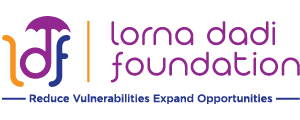NISITIRI DHAMINI HEDHI CAMPAIGN – MUNANILA SECONDARY SCHOOL, BUHIGWE, KIGOMA TANZANIA
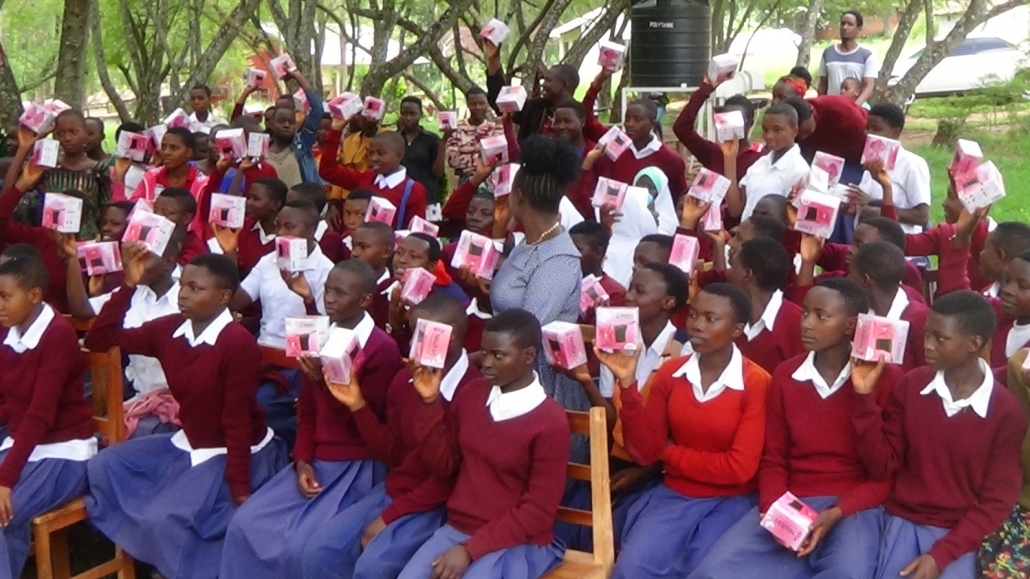
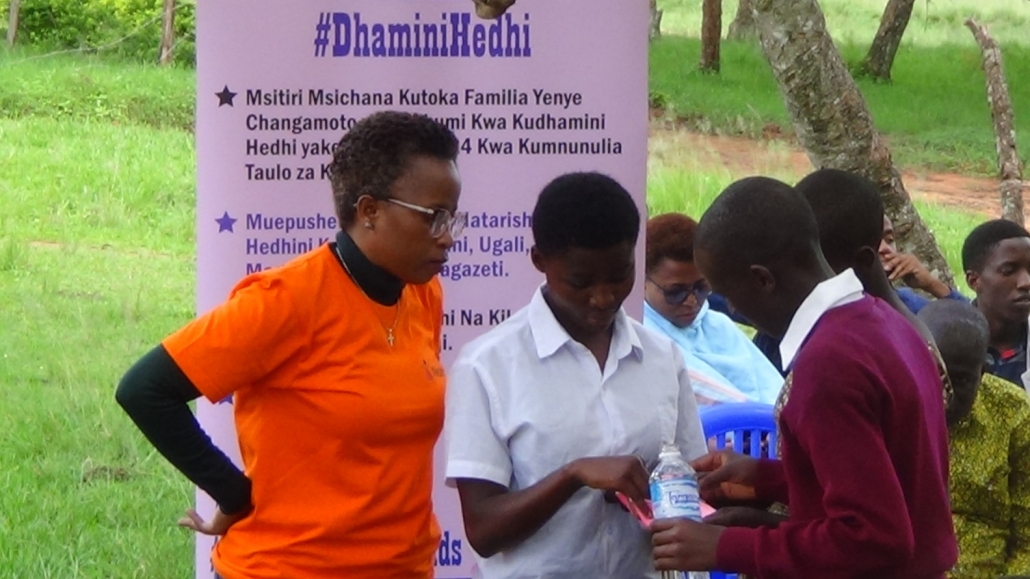
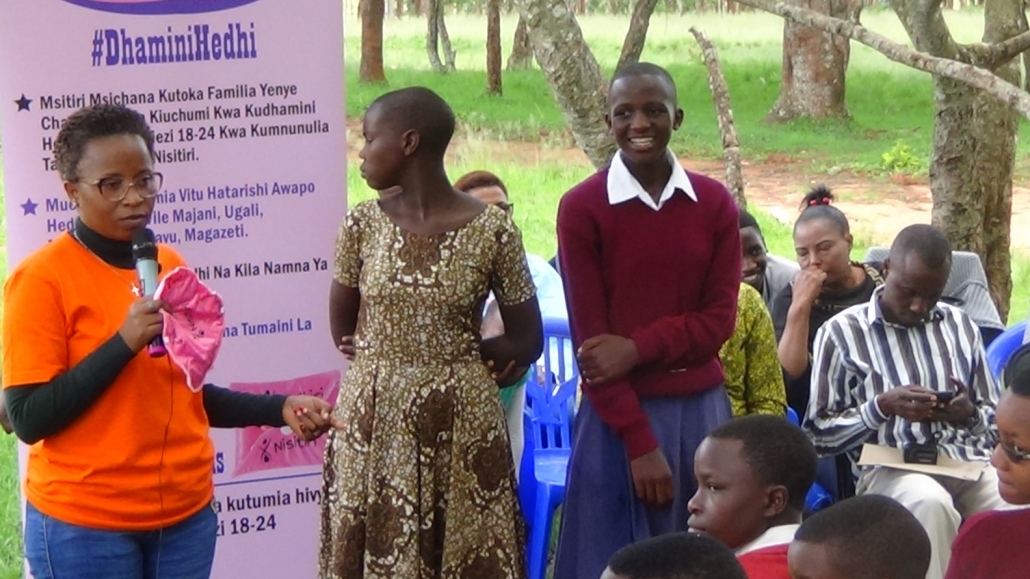

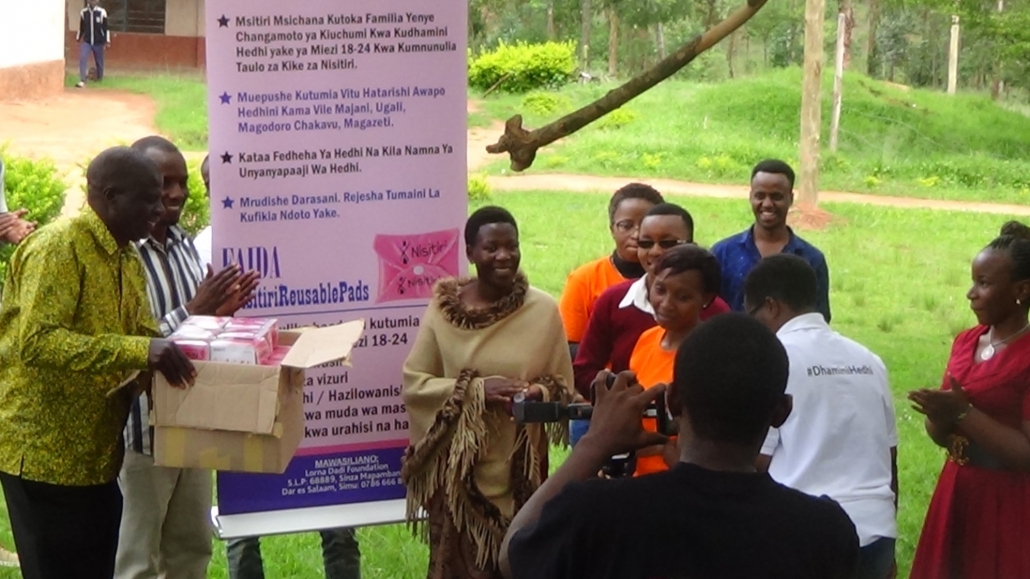





In previous two posts at the I.A.A.M Page we have been discussing about adolescence challenges. Introduced about the kind of growth a girl-child undergoes and we started with Physical Growth where we particularly talked about Menstrual Periods and Sexual maturity.
Today we will learn about Emotional Growth.
During the time of early adolescence, you will start undergoing emotional development which involves establishing a realistic and reasonable sense of identity in the context of relating to others. For example, you will show more interest in your appearance because you will be so considerate on how you will be looking in front of other people or comparing with other people. You may start to show more of an interest in clothes and hairstyles. Some girls of your age may even start to wear makeup. You may also start to worry more and may become more critical of yourself with mood swings. This is normal at this phase of life.
You are beginning to establish your sense of identity. Establishing a sense of identity is the central task of your adolescence. This is the first time when, like other humans, you will have the self-understanding capacity to cautiously sort through who you are and what makes you unique. Your identity refers to more than just how you see yourself right now, it also includes what has been termed as “possible-self”; meaning, what it was thought you might become and who you would like to become.
I know you might by now have started to conceptualize about yourself. You might have already established your set of beliefs about yourself; things such as your attributes (tall, bright, beautiful etc.), the roles you would like to assume, the goals to help you achieve your roles dream, interests and values. This is your Self-concept.
The self-concept you have about yourself forces you to do a self-evaluation. The result you receive after your self-evaluation results into a certain kind of feeling. This feeling is called Self-esteem.
Self-esteem develop uniquely for each individual during adolescence and there are many different forms of self-esteem during adolescence phase. Your self-esteem, whether high or low may remain relatively stable during adolescence or may steadily improve or worsen. This depends on how much you can fill the gap between your self-concept and what you believe you “should” be according to your self-concept. You therefore need to develop cognitive skills to enable you make ideal generalization about yourself.
Self-esteem has two faces and it depends on which among them has a strong influence in you. The first face is what is called “Global” self-esteem which refers to how much you like or approve of your perceived self as a whole. For example, as your body changes you will be experiencing strongly influence, either positive or negative from other people. And this mostly happens during early stages of adolescence and it is because your physical appearance tops the list of your growth developments that are easily seen by others. Comments by others particularly men, your close friends and family may become a part of your identity. This is determined by the way you will be treating their comments, meaning if you approve them within yourself then they will define you and create your identity but if you do not approve them within you then they will have no effect in defining yourself.
“Specific” self-esteem refers to how much you feel about certain parts of yourself. It is very important to identify the specific areas about yourself that you consider to be of most important to you according to your self-concept. For example, in your self-concept one of the strongest belief might be your drawing ability. And if you also believe you can sing, then you expect to be one of the best artist and singer in the future. If you have a strong belief in this then you need to start practicing drawing in every opportunity you get. Drawing is a broad field, as you often practice drawing you will come to a point where you will be able to identify the kind of drawings you are mostly interest in or best at. Practicing drawing most does not mean you cannot do something else from your self-concept, it is just a way of identifying what satisfy you most in terms of roles identification; therefore you can practice other areas that falls next to drawing in your self-concept such as singing. Practicing is a positive sign that you feel secure enough to explorer the unknown. Adolescence is a time when experimenting with alternatives is developmentally appropriate, except when it seriously threaten your health or life.
If you want to raise your self-esteem it is very important you identify the specific areas that are important to you. You need to understand that, trying to improve “Global” self-esteem is difficult but improving your self-concept in specific valued areas is both doable and contributes to “Global” self-esteem in the long-run.
….Continuation from Girls Challenges Post
It is during the middle stage of adolescent when puberty has already passed when you start being extremely concerned with how you look, and you think others are concerned too.
Relationships are often changing during this stage. You will start worrying about sexual attractiveness. Most of middle adolescents complain about their parents preventing them from becoming independent, and they withdraw from them. You may try to assert your independence by picking up annoying habits. There is an intense focus on peer groups during middle adolescence, and teens in this stage tend to confide in each other more than they do their parents.
**Confide to one of your family member – it is safer.
As with early adolescence, teens in middle adolescence may feel invincible. Risk-taking behaviors are significantly increased during this stage. On the other hand, acting-out behaviors begin to decrease, since teens in this stage have a better grasp on how to use words as a means of expression.
It is a “dense” phase of life with intellectual, psychological and social developmental transitions, each transition affects the pathways of the other. Your life can be easily disrupted by events such as unplanned or unwanted sexual and unexpected reproductive events. In this phase of life, you need to be exposed to things that heightens your social status, minimizes your social risks, delay your assumption of adult roles and cultivate a capacity for critical thinking and independent decision-making in order to reshape your future pathway radically and profoundly with cascading benefits over your lifetime. Adolescence is a phase of life when temporary setbacks can have lifelong consequences.
In this phase of life many girls are not being told every important information about their sexual maturity after puberty hence may find yourself encounter one of more of the following challenges:
“To be Continued…”
My dear Girls, There are a number of challenges you are facing during adolescent period as oppose to boys.
1. Menstrual Period
After puberty as a girl child you will start to experience monthly menstruation periods; a state of reproductive process in your body which takes place in a number of days every month whereby there is blood leak in your private parts.
During menstruation period (MP) you will undergo the following challenges:
(a) If you are using disposable sanitary pads, you need assurance of Menstrual Hygiene. Because if you don’t have an access to proper sanitation facilities for regular cleaning and change your sanitary pad you are also exposing yourself to the risk of infectious diseases. Menstrual hygiene need clean water for regular personal cleaning and sanitation. But also, staying longer without changing your disposable pad can cause it to be full enough to start leaking out and cause blood stain in your cloth.(b) If you can’t afford disposable sanitary products, the logical solution would be to do what women did for hundreds of years ago, they used reusable materials like cloth rags to soak up menstrual blood. Or you can use materials like cotton or wool as makeshift sanitary pads. These materials are often not properly sanitized, increase risk of infection, cause physical discomfort and leakage. This will expose you to the risk of public shaming and embarrassment that arises from leaking through your homemade pads and staining your cloth. In such cases, most school girls prefer not to go to school.(c) In the case of blood leakage you may carry a spare cloth with you but it is not easy with school unless you have more than two pairs of school uniform.
(d) Where it is difficult to change sanitary products, the odor of menstrual blood are like to be higher and be detected by yourself and others, this causes discomfort.
The above can be a result of why most girls don’t prefer to get out of their homes including going to school during menstrual period.
It’s normal to have mild cramps during your period, because of uterine contractions. The uterus is a muscle that tightens and relaxes. Menstruation is natural, but for it to cause extreme pain isn’t. However, because so many of us are never taught very much about what to expect from our periods in the first place, it’s hard to tell when something’s wrong. However, if the discomfort is not relieved with over-the- counter medications (such as paracetamol or ibuprofen) and causes you to miss school or other daily activities, it could mean that there is another reason for your symptoms. Menstrual pain is wrapped up in a natural female phenomenon.
Here are some key points about menstrual cramps.
– Menstrual cramps are pains felt in the lower abdomen, before and during menstruation.
– The pain can range from slight to severe.
– Emotional stress can increase the chance of experiencing menstrual cramps.
– Other symptoms include nausea, vomiting, sweating, dizziness, headaches, and diarrhea.
– Menstrual cramps can be treated with over-the- counter medicine and some home remedies.
– Secondary dysmenorrhea is when the cramps stem from another condition, such as endometriosis.
To be continued……………

Lorna Dadi Foundation kupitia NISITIRI Dhamini Hedhi Campaign tunaungana pamoja na serikali, mashirika mbalimbali na jamii kwa ujumla kuhakikisha mtoto wa kike anapata vihifadhi hedhi au kwa lugha nyingine taulo za kike kwa ajili ya kujisitiri katika mzunguko wake wa mwezi (hedhi) lakini pia anapata elimu na uelewa zaidi kuhusu Hedhi salama.
No images available at the moment
Follow Us at Instagram!